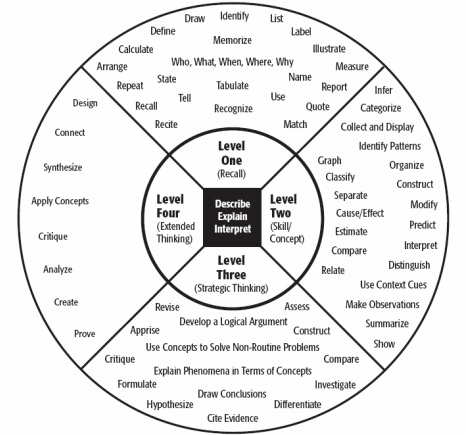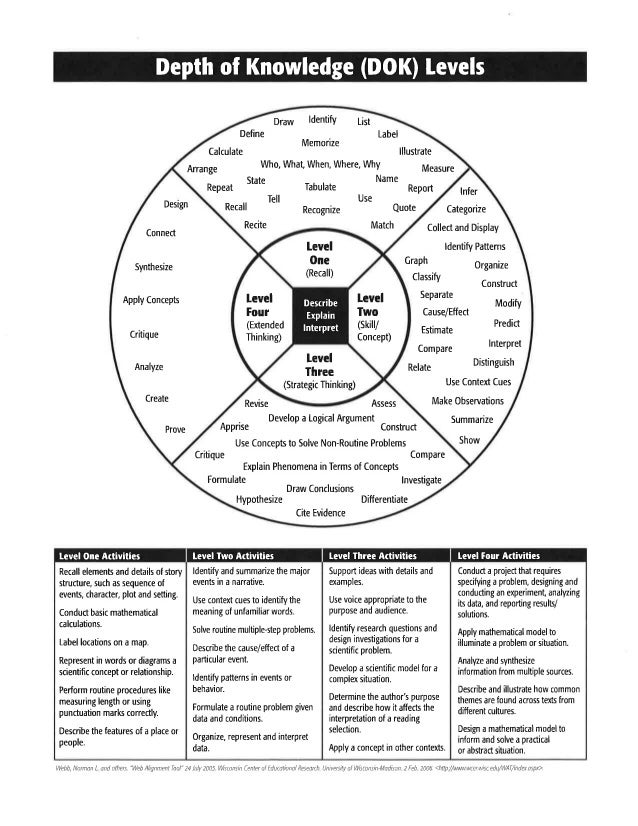
Depth Of Knowledge Chart
Buy this course (€34.41.).Overview.Transcripts.Exercise Files.View Offline.Course detailsTeaching is more than just delivering content; it's about making complex ideas understandable and guiding learners to higher-order thinking. A successful approach to teaching complex topics involves three phases: systematically unpacking the material, turning it into engaging and effective lessons, and then providing extra assistance to students who are struggling. Combined with Universal Design for Learning (UDL) principles for making learning accessible, you can maximize student engagement and achievement—with even the most complex subjects.Karin Hutchinson is an experienced teacher who now helps other educators find new ways to teach. She starts off this course with a quick overview of learning theory, focusing on how students gain new knowledge. These theories set the stage for Karin's framework for making learning accessible to a variety of learning styles (visual, auditory, and kinesthetic), making lessons engaging with gamification and choice, and scaffolding instruction to help guide learners who need extra help.
Starcraft 64 emulator. StarCraft 64 has 1 likes from 1 user ratings.
Understanding Depth of Knowledge and Cognitive Complexity One model for classifying thinking into cognitive levels of complexity is Bloom’s Taxonomy. Bloom’s Taxonomy was first presented in 1956 through the publication, The Taxonomy of Educational Objectives, The Classification of Educational Goals, Handbook I: Cognitive Domain.

Watch to explore strategies for planning instruction, how to respond to learners, and get resources you can put into action in the classroom today.Instructor. Karin Hutchinson helps students all over the world learn match.Karin helps students (including those who absolutely hate math) learn to love algebra and overcome their math anxiety.
She graduated with a bachelor's of science in early childhood education from Towson State University in Baltimore, MD, and taught second grade for five years. Wanting to teach higher-level math classes, such as algebra, Karin then attended Johns Hopkins University for a masters' degree in education with a concentration in math and science education. She moved on to teach algebra in middle school classrooms. Four years later Karin created, a math resource site for teachers and students across the globe. Offers lessons, homework help, a comprehensive algebra curriculum, and worksheets for the many teachers who work so hard teaching algebra.See moreSee lessSkills covered in this course. “- In this lesson we are going to take a look at the Depth of Knowledge chart, which is a great tool for backwards planning your unit. The Depth of Knowledge chart, also abbreviated as DOK, was developed by Doctor Norman Webb.
This chart is very similar to Bloom's Taxonomy in that it helps educators categorize their questions or tasks based on the complexity of thinking that is required to complete the task. So here's a DOK chart that I've put together. You can find a copy in the exercise files. This chart incorporates three areas. A description of each level of thinking, key verbs that can be used in creating questions or tasks, and sample questions or activities for each level. A DOK chart is broken into four levels. Levels one and two are considered lower level tasks that do not require a high level of cognitive thinking.
Level one of the DOK chart is basic recall. Tasks at this level do not require much cognitive effort beyond recalling or remembering facts. They're often used as.Practice while you learn with exercise filesDownload the files the instructor uses to teach the course. Follow along and learn by watching, listening and practicing.